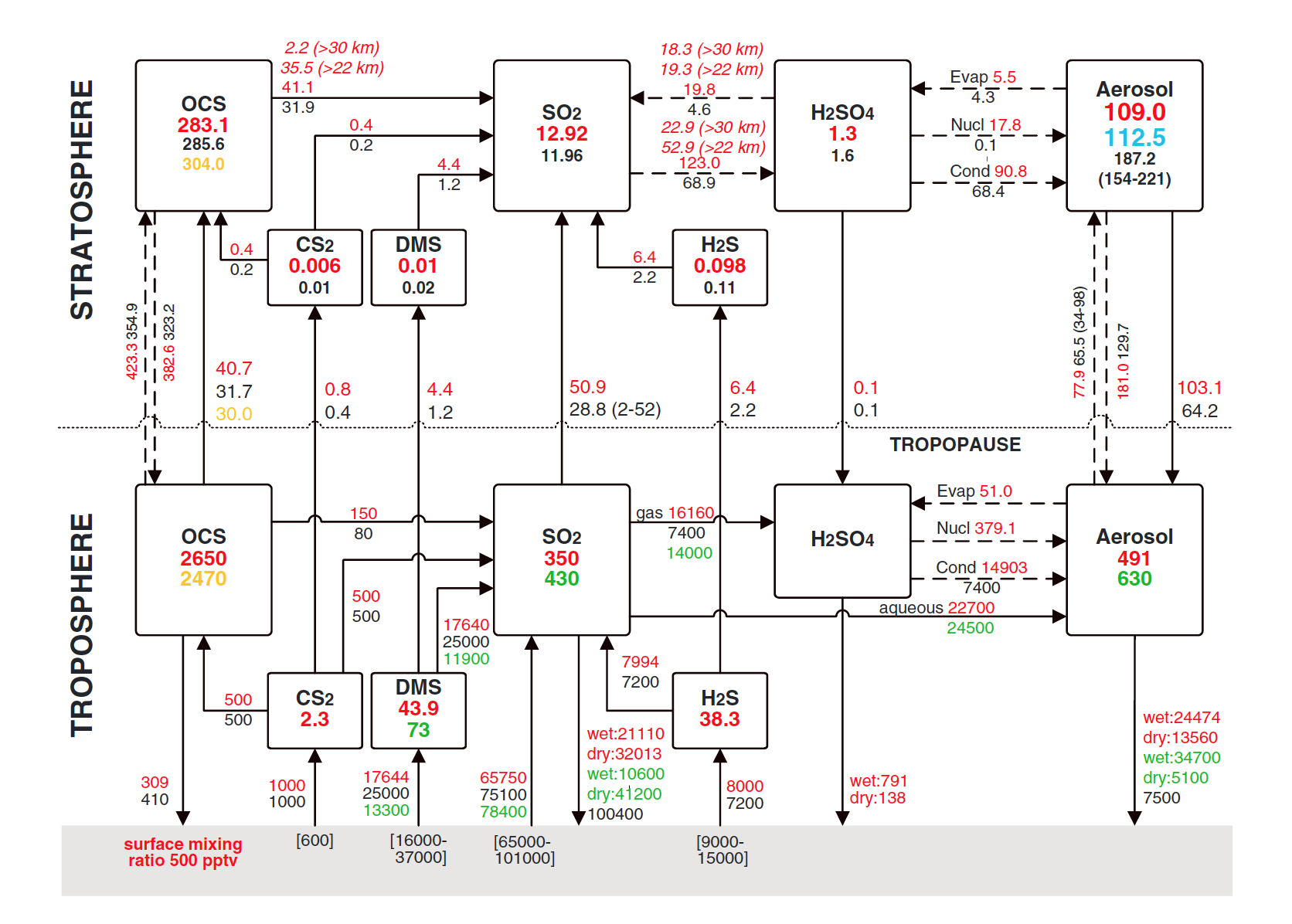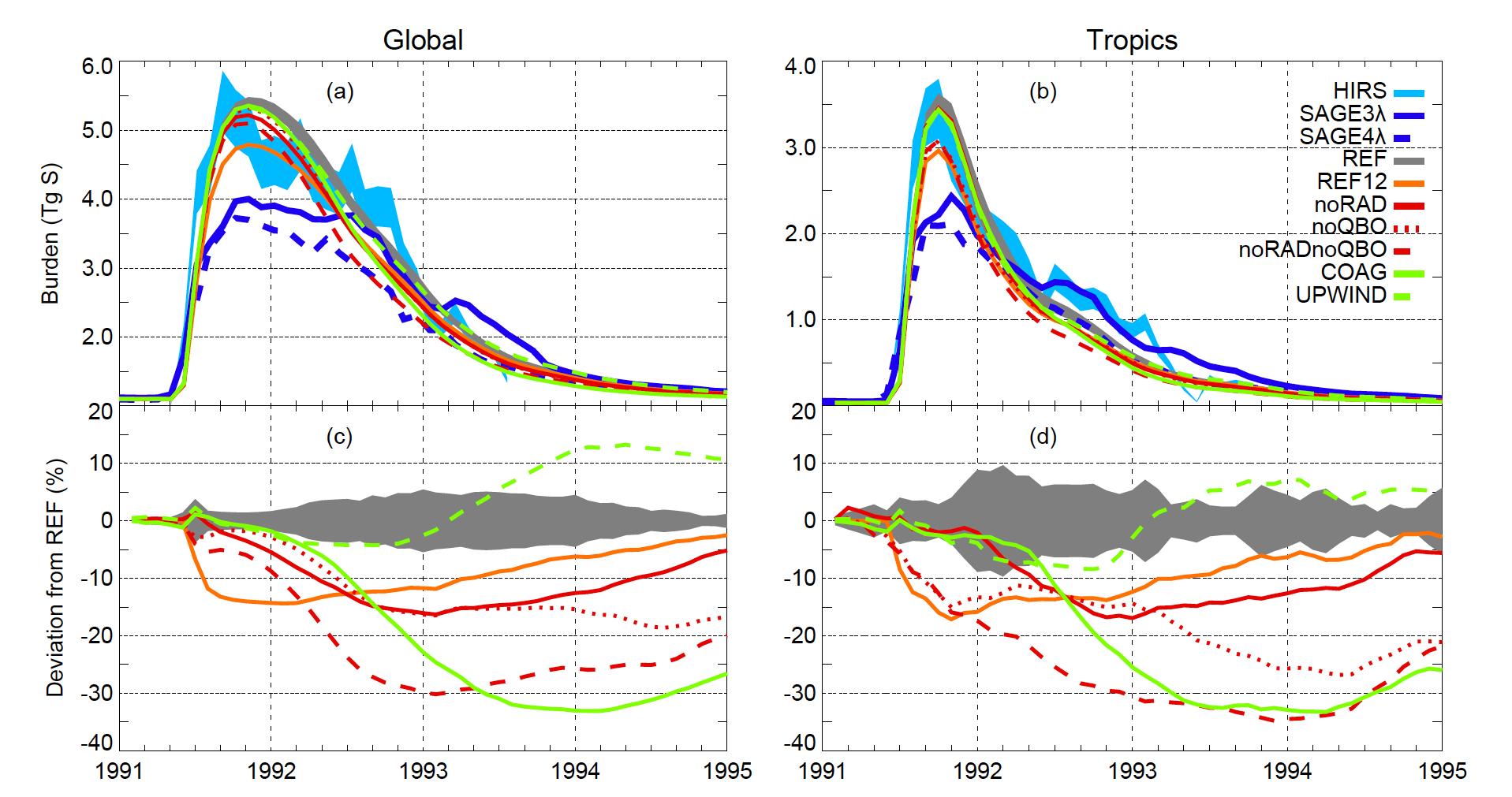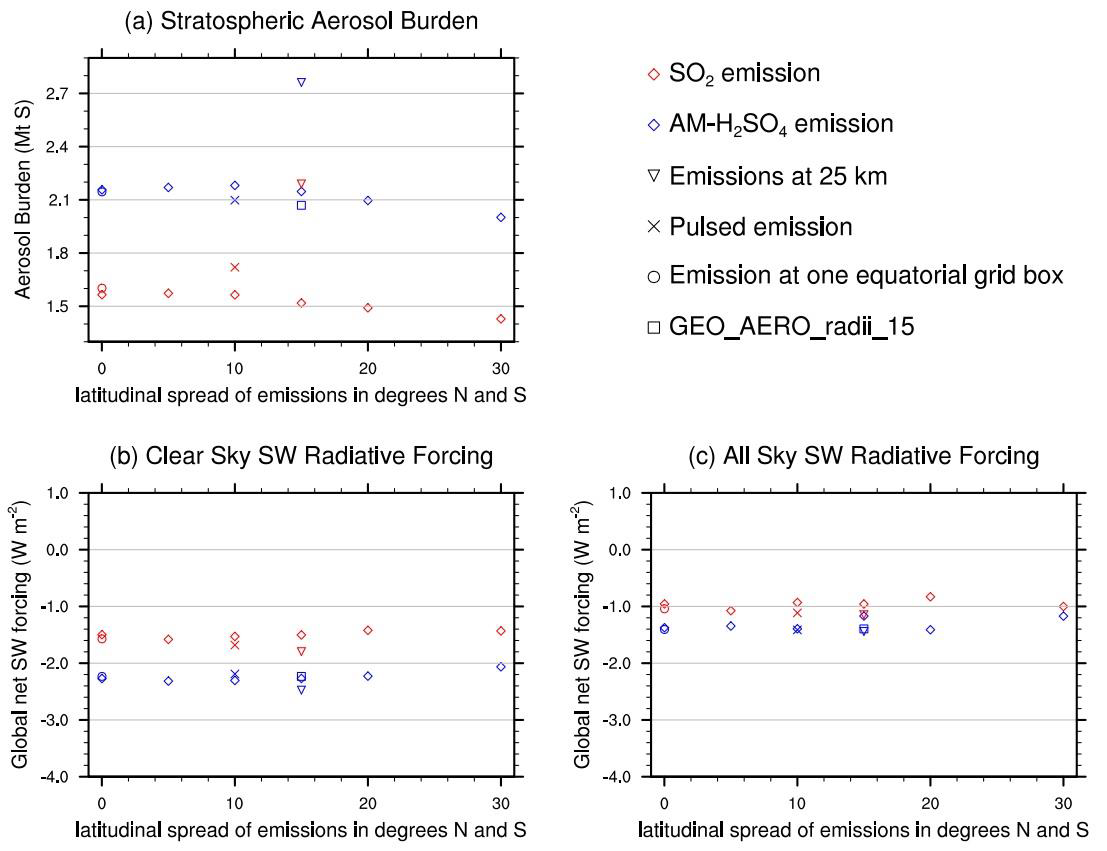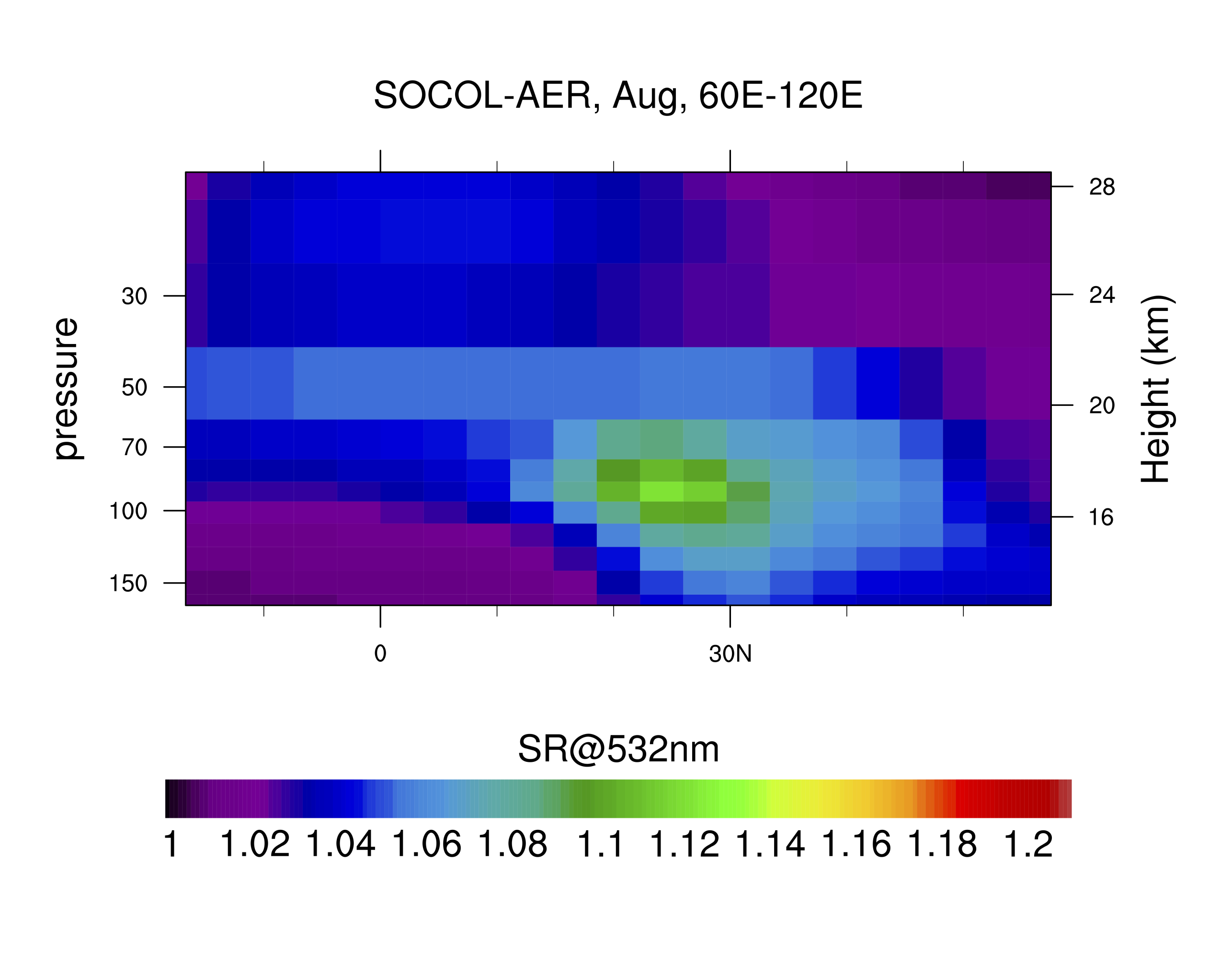Stratospheric Aerosols
Aerosols are not only present in the troposphere. Between 15 and 25 km altitude an aerosol layer primarily made of aqueous sulfuric acid droplets is found. To understand the processes controlling stratospheric aerosol formation and to investigate the interactions of the so-called Junge-layer with atmospheric chemistry and climate we built the coupled aerosol-chemistry-climate model SOCOL-AER.
Involved group members: Aryeh Feinberg, Beiping Luo, Thomas Peter, external page Timofei Sukhodolov, Andrea Stenke
SOCOL-AER
SOCOL-AER (external page Sheng et al., 2015) couples our chemistry-climate model SOCOLv3 with the sulfate aerosol module AER. It comprises gaseous and aqueous sulfur chemistry and comprehensive microphysics. The particle distribution is resolved by 40 size bins spanning radii from 0.39 nm to 3.2 μm, including size-dependent particle composition. The aerosol scheme is interactively coupled to the model’s radiation and chemistry scheme. The modelled particle size distribution is used to calculate the required short- and longwave extinction coefficients, single scattering albedos, and asymmetry factors according to Mie theory and as input to the heterogeneous chemistry routine.
Background Stratospheric Aerosol
external page Sheng et al. used the model to calculate the global atmospheric sulfur budget under volcanically quiescent conditions. They showed that the model successfully reproduces main features of stratospheric aerosols under nonvolcanic conditions. The calculated stratospheric aerosol burden is 109 Gg of sulfur, matching a satellite-based (SAGE II) estimate of 112 Gg. In terms of fluxes through the tropopause, 43% of the sulfur entering the stratosphere was in form of primary tropospheric aerosol, 28% SO2, and 23% carbonyl sulfide (OCS). Anticipated increases in anthropogenic SO2 emissions in China and India have a larger influence on stratospheric aerosols than the same increase in Western Europe or the U.S., due to deep convection in the western Pacific region. However, even a doubling of Chinese and Indian emissions is predicted to increase the stratospheric background aerosol burden only by 9%.

Volcanic Aerosols
Large explosive volcanic eruptions, like Mt. Pinatubo in June 1991, can emit large amounts of sulfur into the stratosphere, leading to an enhancement of the stratospheric aerosol burden. The aerosol layer perturbs the Earth’s radiative balance by scattering incoming solar radiation, which leads to a cooling of the Earth's surface. At the same time absorption of outgoing terrestrial radiation by the enhanced aerosol layers warms the lower stratosphere. In addition, the aerosol particles provide surfaces for heterogeneous reactions, which harm stratospheric ozone.
external page Sukhodolov et al. used SOCOL-AER to evaluate the influence of the 1991 volcanic eruption of Mt. Pinatubo on stratospheric aerosol properties and atmospheric state. An accurate sedimentation scheme was found to be essential to prevent particles from diffusing too rapidly to high and low altitudes. The aerosol radiative feedback and the use of a nudged quasi-biennial oscillation help to keep aerosol in the tropics and significantly affect the evolution of the stratospheric aerosol burden, which improves the agreement with observed aerosol mass distributions, although observations themselves are highly uncertain and render it difficult to conclusively judge the necessity of further model development. Our results show that SOCOL-AER is capable of predicting the most important global-scale atmospheric effects following volcanic eruptions, which is also a prerequisite for an improved understanding of solar geoengineering effects from sulfur injections into the stratosphere (see below).

Geoengineering
Stratospheric sulfate geoengineering (SSG) could contribute to avoiding some of the adverse impacts of climate change. In a recent MSc project in collaboration with the external page Harvard John A. Paulson School of Engineering and Applied Sciences we used SOCOL-AER to investigate 21 different SSG scenarios, each with 1.83 Mt S yr-1 (corresponding to a quarter of the Pinatubo eruption each year) injected either in the form of accumulation-mode-H2SO4 droplets (AM-H2SO4), gas-phase SO2, or as combinations of both at 50 hPa (≈ 20 km) altitude in the tropics and subtropics. The model results indicate that SO2 emission scenarios lead to larger particles than the AM-H2SO4 scenarios. These large particles are less effective for backscattering solar radiation and sedimentation out of the stratosphere is faster.
Vattioni et al., 2018, submitted to ACP.

Asian Tropopause Aerosol Layer
The Asian Tropopause Aerosol Layer (ATAL) is a confined region of enhanced aerosol associated with the Asian Summer Monsoon. Backscatter measurements by instruments such as the satellite-borne CALIOP or the balloon-borne COBALD instrument reveal the ATAL in the altitude range between 90 and 130 hPa. However, the exact composition of the ATAL is not yet clear. SOCOL-AER shows a clear ATAL signal, but the simulated aerosol backscatter assuming pure binary H2SO4-H2O droplets is by about 5% smaller than observed by CALOP. The low temperatures within the ATAL region enable the formation of ternary H2SO4-HNO3-H2O solution droplets by uptake of nitric acid (HNO3). Taking this effect into account leads already to a better agreement with the satellite measurements.
